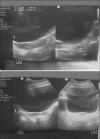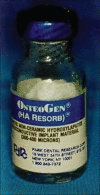Report of a case of Turner's syndrome with localized aggressive periodontitis
- PMID: 21976844
- PMCID: PMC3183671
- DOI: 10.4103/0972-124X.84389
Report of a case of Turner's syndrome with localized aggressive periodontitis
Abstract
Turner's syndrome is a disorder in females characterized by the absence of all or part of a normal second sex chromosome. It is typically characterized by the combination of physical features and cytogenetics in females. Physical features include short stature, primary amenorrhea, hypogonadism, low hair line at the back of the neck, and digital anomalies. Most affected patients have a 45XO monosomy, but the presence of an abnormal chromosome or mosaicism of 45X with another cell line can also fulfill the criteria. Features seen in the oral cavity of patients diagnosed with Turner's syndrome include high palatal vault, hypoplastic mandible, prematurely erupting teeth, and orthodontic anomalies. A case of Turner's syndrome with localized aggressive periodontitis has been reported here.
Keywords: 45XO; Turner's syndrome; flap surgery; hydroxyapatite; hypogonadism; localized aggressive periodontitis; short stature.
Conflict of interest statement
Figures








References
-
- Wilson JD, Griffin JE. Disorders of sexual differentiation. In: Braunwald E, Fauci AS, Kasper DL, et al., editors. Harrison's Principles of Internal Medicine. 15th ed. New York: McGraw Hill; 2001. pp. 2172–84.
-
- Barbara RM, Carolyn AB, Karen RR. 3 perspectives on Turner's syndrome. Endocr News. 2007;8:12–9.
-
- Lopez ME, Bazan C, Lorca IA, Chervonagura A. Oral and clinical characteristics of a group of patients with Turner syndrome. Oral Surg Oral Med Oral Pathol Oral Radiol Endod. 2002;94:196–204. - PubMed
-
- Calof OM, Davidson MB. Turner's syndrome: Diagnosis and management in 2005 (Part 1) Endotrends. 2005;12:1–5.
-
- Virginia P. Sybert and Elizabeth McCauley. Turner's syndrome. N Engl J Med. 2004;351:1227–38. - PubMed

